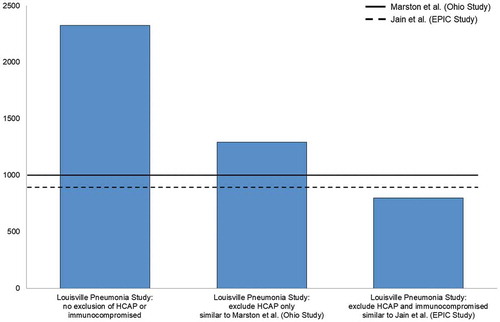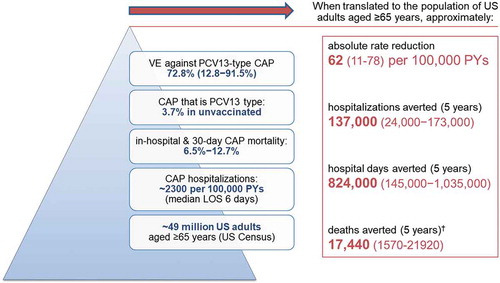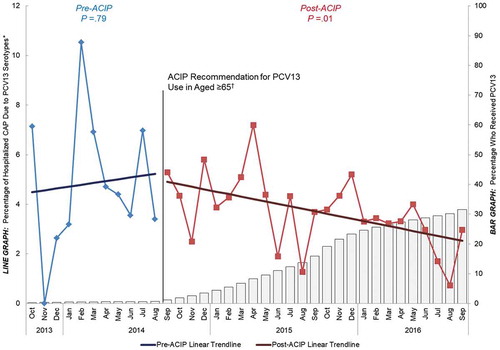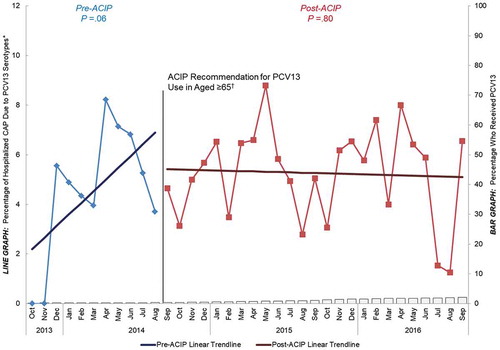Figures & data
Figure 1. Impact of excluding patients with healthcare-associated community-acquired pneumonia (HCAP) and immunocompromising conditions on incidence rates of hospitalized community-acquired pneumonia (per 100,000 person-years) in previously-conducted prospective surveillance studies.Citation25–Citation27
EPIC = Etiology of Pneumonia in the Community; HCAP = healthcare-associated community-acquired pneumonia.

Figure 2. Potential impact* of PCV13 use in US adults aged ≥ 65 yearsCitation51.
CAP = community-acquired pneumonia; US = United States; VE = vaccine effectiveness. *assumes 5% all-cause mortality each year and 100% vaccine uptake. †A significant effect on all-cause mortality was not demonstrated in Community Acquired Pneumonia Immunization Trial in Adults (CAPiTA).Citation19

Figure 3. Percentage of hospitalized CAP caused by PCV13 serotypes and percentage that have received PCV13 over time among adults
aged ≥ 65 years, October 2013−September 2016 (n = 6347) ACIP = Advisory Committee on Immunization Practices. CAP = community-acquired pneumonia. PCV13 = 13-valent pneumococcal conjugate vaccine. *Y-axis does not go to 100%. †Recommendation for routine use of PCV13 for all adults aged ≥ 65 years.Citation14

Figure 4. Percentage of hospitalized CAP caused by PCV13 serotypes and percentage that have received PCV13 over time among adults aged 18 to 64 years with “at-risk” conditions, October 2013 to September 2016 (n = 2976) ACIP = Advisory Committee on Immunization Practices. CAP = community-acquired pneumonia. PCV13 = 13-valent pneumococcal conjugate vaccine. “At-risk” patients were defined as the absence of immunocompromising conditions but the presence of ≥ 1 chronic medical condition including: congestive heart failure, diabetes mellitus, chronic obstructive pulmonary disease (COPD), asthma, liver disease, or current alcoholism or smoking. *Y-axis does not go to 100%. †Recommendation for routine use of PCV13 for all adults aged ≥ 65 years.Citation14

